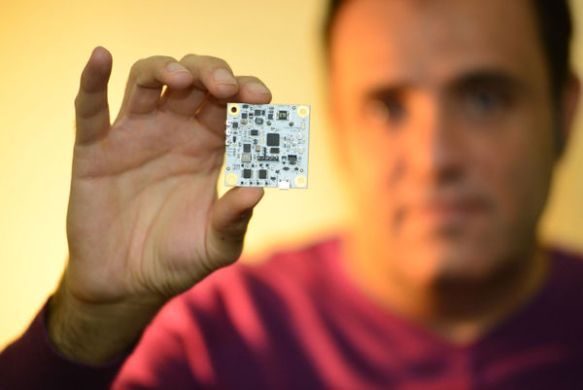
Wireless charging is not really wireless, in terms of today’s technology. The traditional set up involves plugging in a charging pad to a wall and then carefully placing a smartphone or tablet on top of that pad. So you’ve not really eliminated any cords. The Ossia Cota system could change that.
The startup’s Cota (charging over the air) technology sends power to your mobile devices the same way a router sends data, by flowing through the 2.45-GHz spectrum band. The system involves a transmitter with AA batteries and a receiver. The receiver would be built into your devices, and would broadcast a low-power beacon signal to the transmitter at a rate of 100 times a second, which will tell the transmitter how dire the charging situation is. When the transmitter gets that signal it sends power back.
Ossia claims its devices will not interfere with the Wi-Fi signals also traveling on that spectrum in your home or office. It goes so far as to claim the transmitter could also act as a Wi-Fi router.
Our sister website, Tom’s Guide, recently went hands on with the Cota system at CES 2017 in Las Vegas. Avram Piltch said he saw the evidence that the system works using a dongle and an iPhone. The dongle is just a stop-gap until the company gets licensed by phone or other electronic manufacturers. The company showed off three transmitters: a ceiling tile, a wall unit and a cylinder that looks a little like an Amazon Echo. A system’s admin control panel software will allow IT managers to remotely control a fleet of Tiles.
Cota claims the transmitter can handle powering up to 30 devices at once, covering a range of 2 to 3 meters. But, it’s unlikely to work well going through walls. It won’t charge quickly, either, sending up to 1 watt at a time. That’s likely 5 times slower than traditional chargers, and it actually the maximum allowed by the FCC. Until the technology is proven safe, that rate is unlikely to change. But, it’s worth noting that independent researchers claim that Wi-Fi signals can’t affect organic matter
